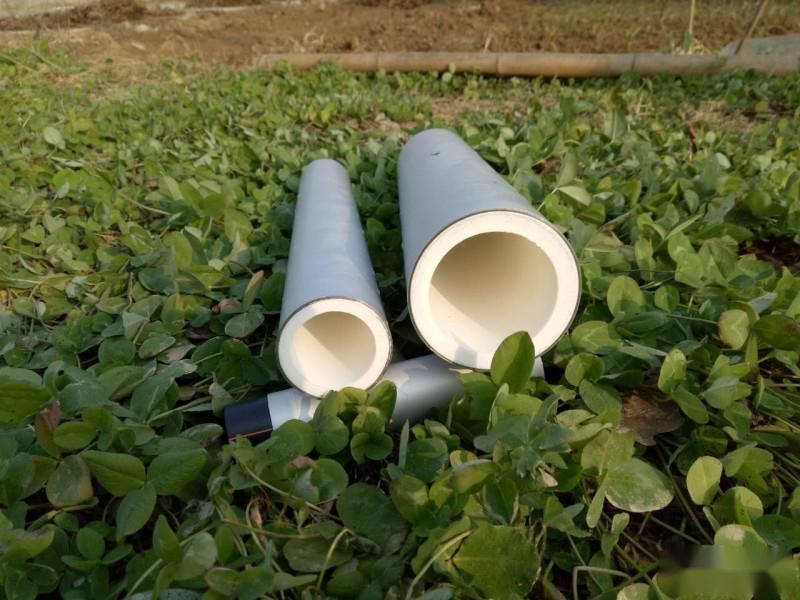The renovation of the water system during our home decoration is crucial and cannot be overlooked. The choice of piping materials directly affects human health and the ecological environment. To successfully renovate the water system, the selection of water system renovation materials is essential. With the advancement of technology and the improvement of living standards, green pipes have become the pursuit of consumers and the direction for the future development of the piping market. Among numerous national brands, Jiangsu Runshuo Pipeline, representing a new generation of green and environmentally friendly pipeline enterprises, is developing and growing rapidly.
In recent years, aluminum alloy composite pipes with plastic lining have developed rapidly. These pipes are increasingly favored in both residential and industrial applications due to their energy-saving and material-saving properties, ecological protection, improvement of living environments, enhancement of building functionality and quality, reduction of building weight, and convenience of completion. They play an irreplaceable role in municipal pipeline projects, civil construction, and home decoration. With the enhancement of our country's comprehensive national strength and the improvement of people's living standards, aluminum alloy composite pipes with plastic lining have made significant advancements.

1. Pressure resistance and aging resistance - Aluminum alloy composite pipes not only have a beautiful appearance but also effectively resist ultraviolet radiation from sunlight, enhancing the aging resistance and lifespan of the pipes, making them particularly suitable for exposed installations.
2. Excellent oxygen barrier performance - Plastic itself is a non-gas-tight material, allowing oxygen to easily penetrate plastic pipes and enter the water. Aluminum alloy composite pipes can effectively block the intrusion of oxygen, overcoming the drawback of single plastic pipes that can lead to the growth of microorganisms and algae.
3. Convenient installation - Weighing only 1/6 of galvanized pipes, they are easy to transport, and hot-melt connections do not require threading. The operation is mastered easily, allowing for better control and quicker installation. Hot-melt connections will not crack or shrink, preventing leaks and achieving a maintenance-free pipeline system.
4. Stable flow - The inner wall is smooth and does not accumulate scale, resulting in low transport resistance and stable flow.
5. Insulation and energy saving - Low thermal conductivity, providing good insulation and energy-saving effects.
6. Applicable scope - Suitable for hot and cold water supply, natural gas pipelines, and air conditioning pipes.
7. Technical parameters - Operating temperature: -20 to 95°C.
Aluminum alloy composite pipes with plastic lining are a new type of practical pipeline developed based on traditional plastic pipes. They combine the physical and chemical advantages of both metal and plastic materials, ensuring superior sanitary performance and pressure resistance, while also providing frost resistance, thermal insulation, noise reduction, corrosion resistance, seismic resistance, light weight, rigidity, and a maintenance-free lifespan of fifty years. Exposed portions of plastic pipelines may deform after heating, making it impossible to maintain a level and straight alignment, and cannot block ultraviolet radiation and oxygen from corroding the pipes and associated metal components, leading to a significantly reduced lifespan. Therefore, they cannot meet the requirement of being used for fifty years under specified pressure and temperature ranges, which is why Runshuo's aluminum alloy composite pipes with plastic lining were developed. Aluminum alloy composite pipes typically use hot-melt connections, which are convenient, simple, safe, and secure. Currently, there are no other methods available. Runshuo's aluminum alloy composite pipes come with matching stripping tools. By using the pipe end ruler and stripping length parameters, the outer pipe is cut radially, ensuring the depth does not damage the outer wall of the inner plastic pipe. After the outer pipe is mostly stripped, the outer pipe is cut longitudinally in the direction indicated by the arrows. When using the aforementioned tools, gloves should be worn to prevent cuts from metal burrs. The cutting range must be strictly controlled within the color band, and the stripping of aluminum alloy composite pipes should not be too long to prevent exposure of the inner plastic pipe and loss of the rigid sheath and oxygen barrier performance. During hot-melt installation, regardless of the stripping tools used, care must be taken to protect the aluminum alloy outer pipe, and the use of clamps is strictly prohibited to avoid leaving noticeable scars on the outer pipe that could affect the overall appearance.














